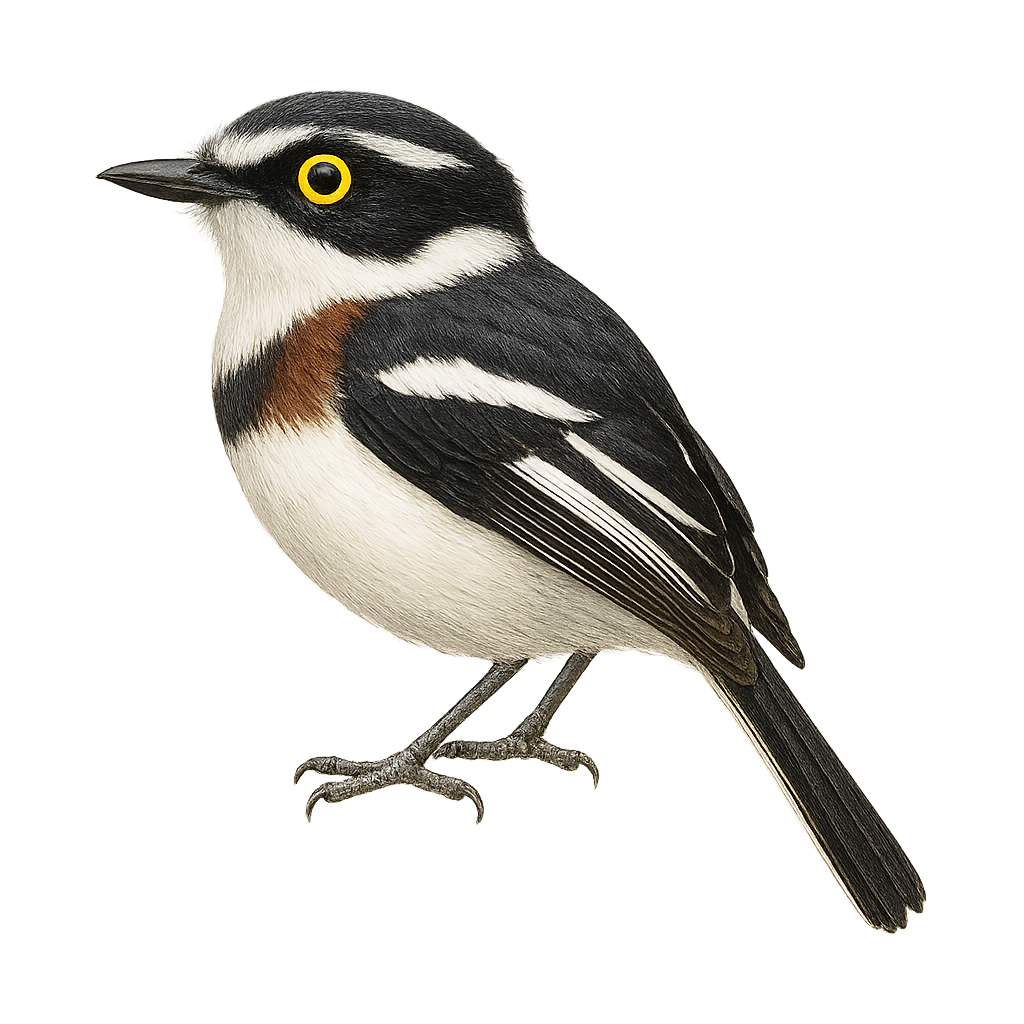Your wildlife photography guide.
Explore the eastern black-headed batis in detail, study its behavior, prepare your shots.
Where to observe and photograph the eastern black-headed batis in the wild
Learn where and when to spot the eastern black-headed batis in the wild, how to identify the species based on distinctive features, and what natural environments it inhabits. The WildlifePhotographer app offers tailored photography tips that reflect the eastern black-headed batis’s behavior, helping you capture better wildlife images. Explore the full species profile for key information including description, habitat, active periods, and approach techniques.
Eastern Black-headed Batis
Scientific name: Batis orientalis

IUCN Status: Least Concern
Family: PLATYSTEIRIDAE
Group: Birds
Sensitivity to human approach: Tolerant
Minimum approach distance: 5 m
Courtship display: April to May
Incubation: 14-16 jours
Hatchings: April to June
Habitat:
savannas, dry forests, shrublands
Activity period :
Primarily active during the day, with peak activity in the morning and late afternoon.
Identification and description:
The Eastern Black-headed Batis is a small passerine bird belonging to the Platysteiridae family, predominantly found in the arid and semi-arid regions of East Africa. It is characterized by its striking black and white plumage, with a distinctive black band across the head and a white chest. Males and females exhibit sexual dimorphism, with males displaying brighter colors. This bird is often seen alone or in pairs, feeding mainly on insects caught in flight or on the ground. Known for its melodious calls and territorial behavior, the Eastern Black-headed Batis is a diurnal bird, active mainly in the morning and late afternoon. It is relatively tolerant of human presence, making it easier to observe.
Recommended lens:
400 mm – adjust based on distance, desired framing (portrait or habitat), and approach conditions.
Photography tips:
To photograph the Eastern Black-headed Batis, it is advisable to use a telephoto lens of at least 400mm to capture detailed images without disturbing the bird. Look for it in savannas and shrublands, where it is often active in the morning and late afternoon. Be patient and discreet, as although it is tolerant, it may fly away if approached too abruptly. Take advantage of the soft morning light to achieve naturally balanced colors in your shots.
From knowledge to field practice
A species profile helps you understand an animal. In the field, the challenge is often different. Remembering your own observations.
The WildlifePhotographer app allows you to:
• record your personal observations
• note locations, dates, and behaviors
• revisit your field references over time
• build a private and long-term field logbook
The app does not provide observation locations.
It helps you organize what you actually observe, with respect for wildlife.

